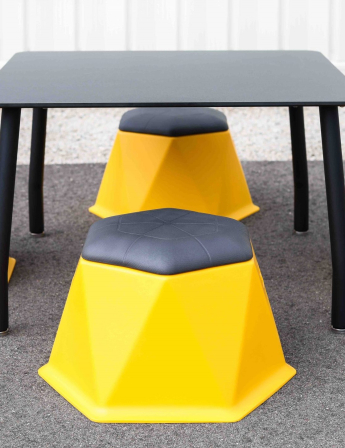Understanding the Differences between Open-cell and Closed-cell Foam for Seating products
When it comes to creating injected foam products, there are two main types of foam that are often used: polyurethane and EVA foam. Each type of foam has its own unique properties and advantages, making them better suited for certain applications than others. In this article, we'll take a closer look at the differences between polyurethane and EVA foam for seating injected products.
Advantages of Polyurethane Foam:
Polyurethane foam is a popular choice for a variety of applications, including automotive seating and cushioning. Some of the advantages of polyurethane foam include:
- Great for indoor seating: Polyurethane foam is well-suited for indoor seating products, where it can provide cushioning and comfort without being exposed to the elements.
- Good shock absorption: Polyurethane foam is also great at absorbing shock, which makes it an excellent choice for products that need to provide protection or cushioning.
- Can withstand high temperatures: Polyurethane foam is also capable of withstanding high temperatures, which makes it ideal for use in automotive seating products.
Advantages of EVA Foam:
EVA foam, also known as ethylene-vinyl acetate foam, is a closed-cell foam that is known for its strength and durability. Some of the advantages of EVA foam include:
- Waterproof: EVA foam is waterproof, which makes it ideal for use in outdoor applications where it may be exposed to moisture or water.
- Tear-resistant: EVA foam is highly tear-resistant, which makes it ideal for use in products that may be subjected to frequent wear and tear.
- Rigid and strong: EVA foam is a more rigid and dense foam than polyurethane foam, making it better suited for applications that require greater structural support.
- Excellent UV resistance: EVA foam is also highly resistant to UV radiation, which makes it an excellent choice for outdoor applications where it may be exposed to sunlight.
- Can be made soft when needed: Despite its rigid and dense structure, EVA foam can be manufactured to be soft and flexible when needed. This makes it an ideal choice for seating products where both comfort and durability are important.
Why Choose Closed-Cell EVA Foam for Seating Products?
When it comes to seating products such as ATV seats, kayak seats, mobility seating, and bike seats, closed-cell EVA foam is an excellent choice. Unlike open-cell foam, closed-cell foam has a more compact structure, making it more resistant to moisture and providing excellent support and comfort.
Cross-linked closed-cell foam make it even more durable and resistant to tearing. This makes it ideal for outdoor use, where it may be exposed to harsh weather conditions. Its waterproof and UV-resistant properties make it an excellent choice for outdoor and frequently use products.
In conclusion, while both polyurethane foam and EVA foam have their own unique advantages, closed-cell foam, such as XL EXTRALIGHT® foam, is the ideal choice for seating products that need to provide both comfort and durability. Its resistance to moisture, tear-resistance, and UV resistance make it perfect for use in outdoor seating applications, while its ability to be manufactured to be soft and flexible when needed makes it an ideal choice for a wide range of seating products. If you're looking for a high-quality closed-cell EVA foam for your next seating product, look no further than Foam Creations, where we offer a wide range of foam solutions.
You can contact us for more information : https://foamcreations.com/en/contact
